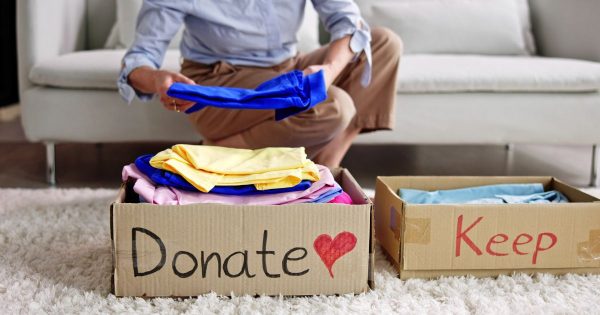Small Shifts, Big Difference
You don’t have to live off-grid or install solar panels to make your home eco-friendly.
True sustainability starts with small, consistent choices — the kind that fit into real life, not just highlight reels.
These ten eco-home hacks are simple enough for any household and powerful enough to change how your home feels — lighter, cleaner, calmer, and kinder to the planet.
1. Start with a Waste Audit
Before changing habits, notice them.
Spend one week observing what your family throws away.
Is it mostly food waste? Plastic packaging? Paper towels?
Awareness is the first step toward meaningful reduction.
WholeMom Tip: Keep a notebook near your bin for a few days and jot quick notes — you’ll spot your biggest opportunities right away.
2. Make Your Kitchen Plastic-Light
You don’t need to go zero-waste overnight. Start with simple swaps:
- Replace plastic wrap with beeswax wraps or silicone lids.
- Store leftovers in glass containers.
- Keep reusable grocery bags in your car so they’re always on hand.
Every plastic-free choice you make breaks the cycle of “single-use convenience” that ends up costing more — for your wallet and the planet.
3. Rethink Cleaning Products
Most commercial cleaners contain synthetic fragrances, microplastics, and harsh chemicals. You can make your own versions with just a few ingredients:
- White vinegar
- Baking soda
- Lemon
- Castile soap
- Essential oils (like tea tree or lavender)
Mix and match for all-purpose sprays, bathroom cleaners, and even laundry solutions.
Cleaner air, fewer toxins, lower cost — that’s real luxury.
4. Switch to LED and Smart Lighting
Lighting accounts for a significant portion of home energy use.
Switching to LED bulbs cuts that in half.
Go a step further with smart plugs or motion sensors that automatically turn lights off when not in use.
Bonus: the soft, warm light of LEDs makes your home feel calmer — not harsher.
5. Simplify Laundry for Savings and Sustainability
Laundry is one of the most energy-intensive household chores. A few small tweaks go a long way:
- Wash in cold water — modern detergents work just as well.
- Air dry when possible.
- Use wool dryer balls instead of fabric softener sheets.
- Switch to concentrated, refillable detergent.
WholeMom Moment: “When I started air-drying on a rack near the window, my clothes lasted longer — and my laundry smelled like sunshine.”
6. Make Your Fridge a Mindful Zone
Food waste is a silent environmental drain.
Organize your fridge by visibility: place soon-to-expire foods at the front and leftovers on a dedicated shelf.
Try this rhythm:
- Friday night: check what’s left.
- Saturday morning: meal plan using what you already have.
- Sunday: grocery shop with intention.
Less waste, more flavor, more peace of mind.
7. Use Water Wisely
Small water-saving actions add up quickly:
- Install low-flow showerheads and faucet aerators.
- Collect rainwater for plants.
- Keep a pitcher of drinking water in the fridge to avoid running the tap cold.
Mindful water use teaches kids early that resources aren’t infinite — they’re shared.
8. Bring Nature In
Indoor plants do more than decorate — they clean the air, stabilize humidity, and soften emotional energy in a room.
Start with easy-care plants like snake plants, pothos, or peace lilies.
If you’re short on sunlight, even a few sprigs of eucalyptus in a jar of water refresh the air and your mood.
WholeMom Tip: Choose one new plant for each main room. It’s a simple ritual that connects your home back to the natural world.
9. Green Your Bathroom Routine
Bathrooms are hotspots for waste. A few sustainable swaps make a difference:
- Refillable soap and shampoo bottles.
- Bamboo toothbrushes.
- Safety razors instead of disposables.
- Reusable cotton rounds for makeup removal.
These swaps aren’t about deprivation — they’re about design that respects both your body and the planet.
10. Create a “Repair and Reuse” Mindset
Before replacing anything, ask: can I repair this? Can I repurpose it?
Teach kids the value of extending an object’s life — sewing a button, repainting furniture, or turning glass jars into storage.
A repair mindset creates resilience, creativity, and a sense of stewardship.
Final Thought: Progress, Not Perfection
Sustainability isn’t an aesthetic — it’s a relationship.
Every eco-conscious action, no matter how small, builds a home that breathes with you, not against you.
You don’t have to do everything. You just have to begin — one mindful choice at a time.
Try This Week
Pick one small change from this list and commit to it for seven days.
By next weekend, notice what’s shifted — not just in your energy bills, but in how your home feels.
Because living sustainably isn’t about sacrifice.
It’s about serenity, simplicity, and stewardship — right where you are.




